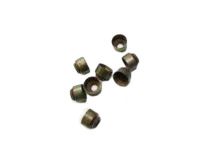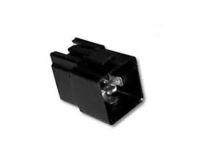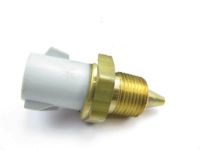

Why choose FordPartsGiant
- Devoted Service
At FordPartsGiant.com, we strive to make customer satisfaction our #1 goal by providing dedicated customer service. Our core values of success continue to demonstrate our loyalty by building dedicated relationships with all of our current and future customers. We are always ready to assist you with the slightest detail about your vehicle's parts and accessories.
- Reasonable Prices
We are the best online source for discounted prices on factory auto parts and accessories. Not everyone has the money to buy their vehicle quality parts, here at FordPartsGiant.com we make it economical to buy the best parts without sacrificing the quality or hurting your wallet.
- Swift Delivery
FordPartsGiant.com has centrally located distribution centers all across the United States. This gives you quick access to our discounted Lincoln Mark VII parts when you need them. We offer our customers the convenience of having parts delivered straight to their front door. We are committed to having your vehicle up and running in just a couple of days.
Popular Genuine Lincoln Mark VII Parts
- Engine Parts View More >
- Lamps & Wiring Parts View More >
- Wheels & Brakes Parts View More >
- Fuel System & Manifolds Parts View More >
- Speedometer, Bumpers, Mirrors & Wipers Parts View More >
- Automatic Transmission Parts View More >
- Radiator & Grill Parts View More >
- Front Suspension & Steering Parts View More >
- Frame, Exhaust System, Spring & Stabilizer Parts View More >
- Fenders & Hood Parts View More >
- Air Conditioner, Radios & Shock Absorbers Parts View More >
- Body Sides & Quarter Parts View More >
Shop Genuine Lincoln Mark VII Parts with FordPartsGiant.com
The Lincoln Mark VII, produced from 1983 to 1993, was a rear-wheel-drive, 2-door luxury coupe in the personal luxury car segment. Initially launched as the Continental Mark VII in 1984, it was renamed Mark VII in 1986. Assembled in Wixom, Michigan, the Mark VII shared production lines with the Ford Thunderbird, Lincoln Continental, and its predecessor, the Continental Mark VI. Built on Ford's Fox platform, the Mark VII featured a front-wheel-drive layout and boasted numerous advanced components. These included digital instruments such as an onboard trip computer, a message center, a full air suspension system on all four wheels, and the distinction of being the first modern American-made vehicle to use a replaceable bulb headlamp system. In 1988, the Mark VII underwent a facelift and ceased production of the base-trim model, offering only the luxury-oriented Bill Blass Edition and the performance-oriented LSC model. The latter featured advanced parts like analog gauges and generated 200 horsepower more than its counterpart. Further updates came in 1990, with the addition of a driver-side airbag and 3-point seatbelts on the outboard rear seats, along with a redesigned interior and dashboard for improved safety and aesthetics. The LSC models also received a 120-mph speedometer and a set of 16-inch wheels. A special edition, the LSC SE, was introduced to enhance the vehicle's market appeal. The Mark VII was replaced by the Lincoln Mark VIII in 1993.
The Lincoln Mark VII, specifically the 1989 and 1981 models, frequently faces issues of stalling at cold starts and backfiring during acceleration. One key concern points to the secondary ignition, with symptoms manifesting as ignition misfires noticeable under load and other situations. Misfires may arise from several factors, including flawed tune-up parts, malfunctioning ignition coils, poorly gapped or worn spark plugs, and substantial deposits on the spark plug electrodes. For an effective diagnosis, a thorough inspection of ignition components is essential, particularly around the spark plug wires and coils when the vehicle operates. Leaks in voltage might be caused by high resistance due to carbon tracking in older or defective tune-up parts. A diagnostic approach of spraying water mist on the components while the engine operates can indicate voltage leaks if the engine's performance deteriorates. Another diagnostic report from a senior technician named John highlighted that, after driving for around 10 to 15 miles and then resting for a period ranging from 30 minutes to a couple of hours, the car consistently stalls. This issue is more pronounced after starting and lessens as the car runs, becoming even more severe in cooler weather and sometimes provoked by road bumps. Diagnostic Trouble Codes (DTCs) P0689 and P0690 were discovered, indicating a potential miscommunication between the ignition key and the PCM. However, tests for these codes showed no issues, and the problem might stem from the PCM, alternator, or PATS module. The third case, concerning the 1981 Lincoln Mark VI, emphasized stalling, particularly after the vehicle remained inactive over the winter. Despite being stored in optimal conditions and receiving a tune-up before the dormant period, the car would occasionally stall upon starting and backfire upon acceleration. Experts suspected a myriad of causes but highlighted the potential of vacuum leaks as the primary concern, advising a detailed check for any detached, broken, or split vacuum lines. To detect such issues, listening for specific noises or using a thread to find leaks were suggested, and the car owner was eager to delve deeper into the diagnosis based on these recommendations.
OEM parts, sourced straight from Lincoln, are distinguished by their superior quality, durability, and precise fit. They are subjected to rigorous quality checks, assuring its safety, resilience, and performance that aligns with your original parts. Should you require genuine parts, including Rear Axle & Drive Shaft, Body Front & Floor for your Lincoln Mark VII, we invite you to explore our extensive collection. We proudly stock OEM Lincoln Mark VII parts, all offered at unbeatable prices. Our parts also come with the added peace of mind provided by the manufacturer's warranty.
Lincoln Mark VII Parts Questions & Answers
- Q: What are the methods available to replace broken valve springs or defective valve stem seals without removing the cylinder heads on Lincoln Mark VII Overhead cam (OHC) engine?A: If the broken valve spring or defective valve stem seals are to be replaced without removing the cylinder heads, there are two methods that can be used. In both methods of repair, compressed air is usually required but if it is not obtainable, a length of nylon rope serves as a tool to keep valves from falling into the cylinder during operation. After removing the valve cover and positioning the cylinders at TDC, compressed air or rope is utilized to maintain the valve position. In this case, special tools compress the spring by using air hence allowing for the removal of the camshaft roller follower, keepers, spring retainer, and valve spring respectively. Valve stem seals are then fitted while components are reinstalled in reverse order. Alternatively, the camshaft and roller follower may be removed using a locally available valve spring compressor after which removal/installation follows a similar sequence.
- Q: How to test and replace a faulty relay in a Lincoln Mark VII?A: Many vehicle accessories utilize relays for transmitting electrical signals. To check if the relay is fine, take it out of the car and test for continuity across the power circuit terminals. Place a fused jumper wire between one control circuit terminal and the positive battery terminal and another jumper wire between the other control circuit terminal and ground. Check for continuity across the power circuit terminals. It requires replacement if any of these tests are failed by the relay.
- Q: How to check and replace the coolant temperature sending unit on Lincoln Mark VII?A: The coolant temperature indicator system has a dashboard light and engine-mounted sending unit. If overheating is indicated, check the coolant level, wiring, and fuses. The indicator light should glow when the ignition is on and the starter motor is running. If it doesn't, the bulb may be burned out, the ignition switch faulty, or the circuit open. Grounding the wire to the sending unit can help diagnose the problem. If the light doesn't go out after the engine starts, it could be due to a grounded wire, defective sending unit, or faulty ignition switch. Check the coolant type and mixture. If replacing the sending unit, disconnect the connector, unscrew the sensor, and use sealant on the threads. Ensure the engine is cool before removal and be ready for coolant loss. Check the coolant level after replacement.



















































